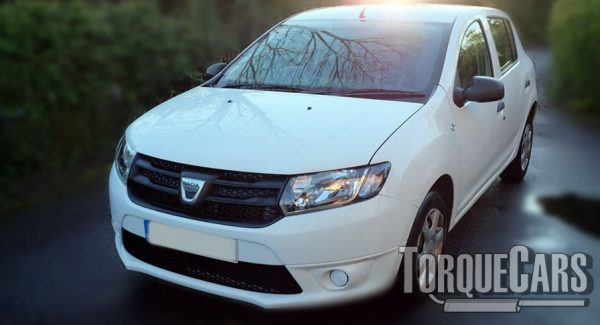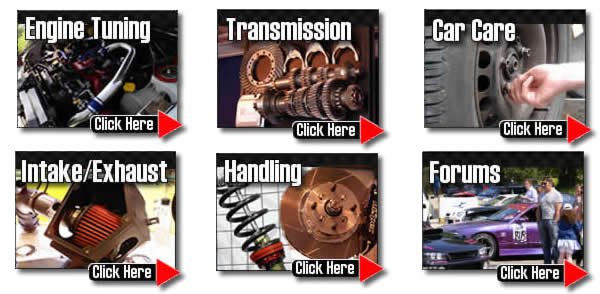Daciai Sandero Tuning
"Thank you for reading my Sandero tuning guide."
So TopGear used the Sandero to benchmark the test track with celebrity drivers. Without any mods the first version really showed up a drivers skill or lack thereof.
We would uprate the suspension, dropping it around 40mm on slightly firmer shocks all round and it will handle much better.
The Renault background really helps with the chassis design and base package giving you something worthwhile to base your tuning project on.
Adding power to the engine and uprating the braking finishes off the tuning package and shows how capable the Sandero really is.
We look at Sandero tuning and report on the greatest modifications. Daciai Sanderos make awesome project cars and with the best tuning mods you can assuredly maximize your driving enjoyment.

We have seen some awesome Sandero tuning projects and there seems to be quite a loyal fan base of Sandero owners. If you do your homework then you can create an awesome Sandero but don't be fooled there are lots of performance modifications out there that will simply not suit it read our unbiased guides first.

Improving the handling for many tuners first priority in your Sandero tuning project. Drop the car by as much as 45mm and fit uprated stiffer dampers, bigger drops will need other modifications in most instances.
The suspension top mounts should be upgraded, the vibration you get from the front end is addressed by fitting solid top mounts and this improves the handling.
Turning our attention to the Sandero's engine we need to get a bit more power out of the top end.
Smaller engines do not provide much of a return in terms of power so start with a bigger engine. Engine swaps are a good option if you have a small engine size.
Engine Tuning.
This list of the stages and tuning upgrades are usually fitted by our members, decide how far you wish to go in your tuning project before you begin.
Here are the range of engines and power figures offered on the first generation Sandero.
- 1.0 16v D4D Hi-Flex 77 hp (57 kW) 161 km/h (100 mph)
- 1.2 16v D4F 732 75 hp (56 kW) 161 km/h (100 mph)
- 1.4 8v K7J 710 75 hp (56 kW) 161 km/h (100 mph)
- 1.4 8v K7J LPG 72 hp (54 kW) 161 km/h (100 mph)
- 1.6 8v K7M 800 85 hp (63 kW) 169 km/h (105 mph)
- 1.6 8v K7M Hi-Torque 95 hp (71 kW) 174 km/h (108 mph)
- 1.6 16v K4M 696 105 hp (78 kW) 181 km/h (112 mph)
- 1.6 16v K4M Hi-Flex 112 hp (82 kW) 195 km/h (121 mph)
Diesel engines
- 1.5 dCi K9K 892 75 hp (56 kW) 157 km/h (98 mph)
- 1.5 dCi K9K 892 90 hp (67 kW) 167 km/h (104 mph)
Then there was a 2012 revision to the range and the following engines were offered. This version won best budget supermini in and other awards and accolades.
- 0.9 12v TCe H4Bt400 90 PS (66 kW)@5000 rpm (103 lb⋅ft) @2250 rpm
- 1.0 12v SCe B4D411 73 PS @6300 rpm (72 lb⋅ft)@3500 rpm
- 1.2 16v D4F732 75 PS @5500 rpm (79 lb⋅ft)@4250 rpm
- 1.2 16v LPG D4F Bi-Fuel 72 PS @5500 rpm (77 lb⋅ft)@4250 rpm
Diesel engines
- 1.5 dCi75 K9K 612 75 PS (55 kW)at 4000 rpm (148 lb⋅ft)at 1750 rpm
- 1.5 dCi90 K9K 612 90 PS (66 kW)at 3750 rpm (162 lb⋅ft)at 1750 rpm
Getting the best mosa for your intended use of the car is a time and money saver. Stage 3 motor sport mods just won't work well on the road difficult in stop start traffic but will excel on the track.
Please watch our introduction Video tutorial to car tuning. Be sure to subscribe and support our new channel.
How to tune your car
- Improve the handling
Focus on Suspension improvements, such as coilovers and make sure the bushings are in good order and that the alignment is correct. Then focus on improving the brakes, with a big disk brake conversion kit and fast road brake pads.
- Remove restrictions
Focus on the intake and exhaust with filters being the common point of restriction in a tuned car. Intercoolers may also become restrictive on turbo engines so this may also need to be uprated.
- Burn more fuel & air
Increase the fuelling so it matches the air coming into the engine. The ratio is important so you need to improve the fuel pump and injectors, so the head mods, big valve conversions, fast road camshafts and forced induction upgrades extra supply of air is adequately met.
- Test and replace any weak parts
Weak areas are commonly the clutch, the turbocharger and pistons and crankshaft in a highly tuned engine. Makes sure these components will cope with your power aspirations.
- The Tune or Remap
A cars ECU controls the fuel, timing, spark and even the turbo in some cases, so to fully extract your gains you should remap the car last and this will fully release the power. Some cars are easy to map, and others require piggyback ECU's or aftermarket ECU's but this is the most vital step of your tuning project.
Modifying to Stage 1:
Panel air filter, Remap, Lighter flywheel, Sports exhaust, Suspension upgrade (drop 30-45mm), Alloy wheels.
Modifying to Stage 2:
Power/Sport clutch, Fast road cam, high flow fuel injector, fuel pump upgrades, Ported and polished head.
Modifying to Stage 3:
Engine balancing, Adding or upgrading forced induction (turbo/supercharger), Internal engine upgrades (pistons/head/valves), Competition cam, Sports gearbox.
You really need to keep as much low end power as you can and aim to get a wide power band rather than a narrow top end power spike.
In this article we shall give your a good starting base to the best mods for your car, but we'd encourage you to spend some time on the site looking into the details of each type of performance modification.Fast road cams offer one of the biggest performance gains for your money as far as a bolt on modified mods goes on a NASP engine.
It improves the intake and exhaust flow and pushes up the power if done right. Ideally you'd add other mods and finish up with a performance chip. TorqueCars would caution you not to go with a competition cam as this affects the engines idling and general town driving characteristics.You will need to ensure that the engine is not starved of fuel so will need to increase the fuelling.
If you find you suffer from flat spots and power surges after your tuning mods you should check the fuelling and try a higher octane fuel as well. Uprated injectors will enable you to supply sufficient fuel to the engine. A fuel pump will only deliver a finite amount of fuel, so you may need to uprate this if your injectors are demanding more fuel.
Intake and Exhaust Tuning.
The next area for modification is the intake and exhaust. Induction kits will only help to add performance if your air intake is struggling! Adding an induction kit to most standard engines will see NO POWER GAIN AT ALL.
If you have heavily modified your engine and it's need for air INCREASES DRAMATICALLY then an induction kit is the answer and will help remove this restriction.
Induction kits can work well on turbo engines and larger engines (if supplied with a suitable cold air feed or air box), generally though we'd just recommend for Sandero engines you should go with a performance panel air filter preferably made from cotton.
Sports exhausts can usually air flow from the engine but do not go too wide or you may end up will reduce the flow rate. Stick to 1.5 to 2.5 inches for best results.
flowed (porting and polishing) the head will allow you to maximise your air/fuel charge. Leave this to a professional though with a proper flow bench and machine tools Your clutch can fail as you increase the power if it starts to suffer and the standard clutches are only ever good for power gains of up to 45%. Fit an upgraded clutch to avoid power loss through the transmission.
NASP engines do not achieve big power gains if you remap them, unless you have done extensive modifications. With turbocharged engines this is another story. A remapped turbo will give large power gains and fully release the potential power of the engine. Despite the large cost involved adding forced induction to a NASP engine will give large power gains. It is generally cheaper to bolt on a supercharger than it is to bolt on a turbo. With a turbo the power curve is related exponentially to the engine speed making it difficult to map fuelling with.
It is simpler to map a supercharger because the boost is correlating to engine speed on a linear curve. Decreasing the engines compression ratio will allow you to add forced induction, water injection may also help prevent detonation.
Alloy wheel upgrades.
The benefits of alloys include a lower unsprung weight and more efficient brake cooling via the extra air flow they allow. The drawback to large rims on your Sandero is that you're altering your final drive ratio and this will have a negative effect on acceleration.
With this in mind we would advise sticking to a maximum wheel size of 16 inches, although we know some of our members have fitted larger wheels with no problems.
For more information on Tuning your car please join us in our friendly forum where you can discuss Sandero options in more detail with our Sandero owners. It would also be worth reading our unbiased Daciai tuning articles to get a full grasp of the benefits and drawbacks of each modification.
Please help us improve these tips by sending us your feedback in the comments box below. We love to hear what our visitors have got up to and which mods work best for them on each model of car. Comments are used to improve the accuracy of these articles which are continually updated.
If you liked this page please share it with your friends, drop a link to it in your favourite forum or use the bookmarking options to save it to your social media profile.
Check out TorqueCars new YouTube channel, and see their awesome new content...
Feedback
Please use our forums if you wish to ask a tuning question, and please note we do not sell parts or services, we are just an online magazine.
Help us improve, leave a suggestion or tip
One Response to “Sandero Tuning”

The dacia front top mounts needs upgrading.
As a dacia owner I have notice that the front of the Car does have alot of vibration that because the top mount is not fasten direct to the body of the Car. In my dacia I ordered the top solid mounts from k-techracing.co.uk which gives a better handling